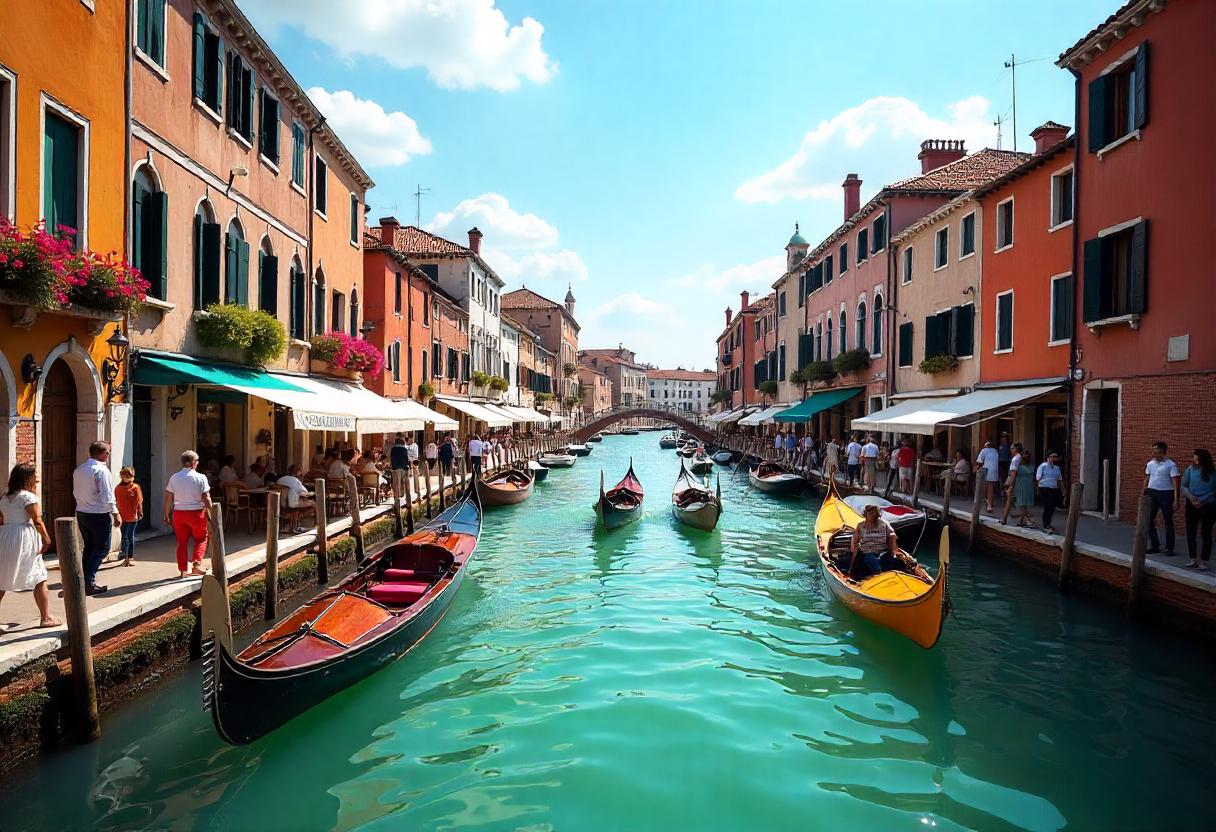Sunday, June 22, 2025
Italy, Peru, Indonesia, Japan, Iceland, and Greece—once hailed as dream travel destinations—are now at the heart of an overtourism crisis in 2025, where soaring visitor numbers, overcrowded attractions, inflated prices, and cultural erosion have left many travelers disillusioned. These iconic hotspots, known for their Instagram appeal and global fame, are increasingly being viewed as stressful, inauthentic, and environmentally strained. As the tourism boom outpaces local capacity, experts now urge travelers to look beyond the glossy images and seek quieter, more meaningful alternatives off the beaten path.
Welcome to the Era of Overtourism Where Crowds Replace Tranquility and Landmarks Lose Their Magic
In 2025, travel is booming once again—but not always for the better. While international borders have reopened and demand has soared, many of the world’s most iconic destinations are now facing a crisis of overtourism. The rush to experience bucket-list landmarks has led to overbooked hotels, congested streets, inflated prices, and degraded cultural heritage. Though the thrill of visiting famed locations is real, the true joy of travel may now lie in exploring lesser-known places that offer more space, more authenticity, and far less stress.
Venice, Italy: Beauty Strangled by Its Own Popularity
Venice remains one of Europe’s most visually stunning cities, but its infrastructure is crumbling under pressure. With more than twenty-five million annual tourists—many arriving on cruise ships—days can see up to one hundred and twenty thousand visitors pouring into its fragile, historic canals.
Locals are rapidly disappearing. The population has fallen to fewer than fifty thousand, as rising rents and the proliferation of short-term rentals have made it increasingly difficult for residents to stay. Crowds clog every alley, water taxi, and bridge, turning a romantic escape into a logistical headache.
Consider Instead: Trieste, Italy
Located just two hours away, Trieste offers similar maritime charm with elegant architecture, historic cafés, and far fewer tourists. With a harmonious mix of Italian, Austrian, and Slovenian heritage, the city offers a culturally immersive experience without the overwhelming crowds.
Machu Picchu, Peru: Ancient Wonder Under Pressure
High in the Andes, Machu Picchu is one of the world’s most admired archaeological sites. However, it is also one of the most endangered by tourism. Though capped at four thousand five hundred visitors per day, the daily influx still causes trail erosion, litter buildup, and stress on local infrastructure.
Aguas Calientes, the gateway town, has transformed into a crowded and overpriced stopover. UNESCO has raised multiple concerns over sustainability, but enforcement remains difficult.
Bali, Indonesia: From Serenity to Saturation
Bali has remained a magnet for global tourists, celebrated for its sacred temples, vibrant surf culture, and emerald-green rice terraces that cascade down its hillsides. But the rapid rise of tourism—welcoming more than six million international visitors annually—has changed the island’s character. Traffic congestion in areas like Canggu and Ubud is near-constant, beaches are overcrowded, and formerly sacred temples are overrun with camera flashes.
Environmental challenges, including water shortages and plastic pollution, now threaten both local life and natural beauty.
Santorini, Greece: A Caldera of Crowds
Santorini’s iconic white architecture and breathtaking caldera views draw global admiration, but the island is now paying a steep price for its popularity. On busy summer days, up to eighteen thousand cruise passengers flood the small island. Hotel prices are steep, restaurants book out weeks in advance, and public areas are jam-packed.
The island’s narrow streets are often gridlocked with tourists, and water resources remain strained throughout the high season. Local waste infrastructure is overwhelmed, unable to cope with the surge in visitor-generated refuse.
Kyoto, Japan: Tradition in Crisis
Once the quiet cultural heart of Japan, Kyoto is now struggling to retain its identity. In districts like Gion, known for geisha traditions, the influx of tourists has led to resident complaints, signage banning photography, and blocked streets.
Many tea houses and historic venues now prioritize tourist traffic over local patrons. This shift is diluting centuries of tradition in favor of commerce, eroding the very heritage that makes Kyoto special.
Reykjavik, Iceland: A Hotspot Turned Overheated
Since 2010, Iceland has seen a meteoric rise in tourism. Annual visitor numbers have surged from five hundred thousand to over two million, with most travelers staying near Reykjavik and following the Golden Circle route.
The resulting congestion affects everything from geysers to the Blue Lagoon, turning natural escapes into overcrowded photo ops.
Try Instead: The Westfjords, Iceland
The remote Westfjords region receives less than five percent of Iceland’s total visitors. Here, you’ll find towering cliffs, unspoiled fjords, and peaceful villages. Iconic sites like Dynjandi waterfall and the Látrabjarg cliffs offer raw beauty without the crowds.
Final Thought: Seek What’s Rare, Not Just What’s Rated
Travel should leave both visitors and places better off. Choosing lesser-known, less congested destinations supports cultural preservation and offers more rewarding, peaceful journeys. The world is vast, and magic still exists far beyond the tourist trail.
Italy, Peru, Indonesia, Japan, Iceland, and Greece are facing a tourism tipping point in 2025, as overcrowding, rising costs, and cultural damage make these once-iconic destinations no longer worth the hype.
Those who venture off the beaten path will not only discover hidden beauty but also help restore balance to the places we love most.
